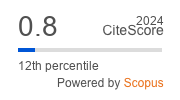STANDARD MODEL HETEROSTRUCTURES FOR MICROWAVE DEVICES
https://doi.org/10.17073/1609-3577-2016-1-43-49
Abstract
This paper addresses the need to develop a methodology of choosing initial materials, architecture of heterostructures and their synthesis for specific types of microwave components taking into account the availability of domestic materials and technologies, locates. Moreover, extending the product range significantly increases the requirements to energy consumption, dimensions and weight, frequency range, noise, sizes of working temperatures and other characteristics of microwave components. Specific examples of amplifiers for various applications (wireless communication and location systems) show that the development of these devices requires modern methods of multilevel computer modeling implying various optimization techniques as well as wide use of proven technical solutions. This development results in the fabrication of a number of standard basic physical models of heterostructures which are based on the solution of optimization tasks, e.g. choice of initial material, substrate material, structure of layers, their sequences, thickness of layers, impurity contents in them, impurity distribution in layer thickness, etc. the totality of which allows achieving an acceptable level of mechanical stress and high electrophysical parameters in heterostructure. The availability of a set of source data in the form of a library of standard heterostructure models will significantly speed up the development of various microwave and optoelectronics components within the system of instrument and technological design, and improve the characteristics of the devices and their economic parameters.
About the Authors
K. K. AbgaryanRussian Federation
Karine K. Abgaryan — Cand. Sci. (Phys.−Math.), Head of the Department.
40 Vavilov Str., Moscow, 119333 .
V. A. Kharchenko
Russian Federation
Vyacheslav A. Kharchenko — Dr. Sci. (Eng.), Senior Researcher.
40 Vavilov Str., Moscow, 119333 .
References
1. Nemudrov V., Borisov K., Zavalin Yu., Korneev I., Malyshev I., Shiller V. The systems on the chip and the systems in the case. Elektronika NTB, 2014, no. 1, pp. 144—150. (In Russ.)
2. Dmitriev V. F., Osipov A. M. Modeling of microwave transistors by extrapolation of S−parameters. Vestnik Novgorodskogo gosudarstvennogo universiteta, 2004, no. 26, pp. 74—77. (In Russ.)
3. Radchenko D., Sbitnev K. Simulation of a microwave transistor based on an epitaxial heterostructure (HEMT) using Synopsys Sentaurus TCAD. Vremya elektroniki. (In Russ.). URL: http://www.russianelectronics.ru/engineer−r/review/2327/doc/48316/
4. Torhov N. A., Babak L. I., Bozhkov V. G., Razzhuvalov A. N., Sal’nikov A. S. Physical modeling of GaN/AlGaNHEMT nanoheterostructures and high−power microwave transistors using the Synopsys package. Doklady TUSURa, 2012, no. 2(26), pp. 145—151. (In Russ.)
5. Kishchinskij A. Broadband transistor amplifiers of the microwave range: alternation of generations. Elektronika NTB, 2010, no. 2, pp. 60—67. (In Russ.)
6. Yurkov R. Components of NEC Electronics for wireless communication based on silicon−germanium technology. Komponenty i tekhnologii = Components & Technologies, 2006, no. 11, pp. 18—20. (In Russ.)
7. Arendarenko A. A., Oreshkin V. A., Sveshnikov Yu. N., Tsyplenkov I. N. Trends in the development of the epitaxial nitride compounds technology. Modern Electronic Materials, 2016, vol. 2, no. 2, pp. 33—40. DOI: 10.1016/j.moem.2016.10.001
8. Alecksandrov R. Monolithic microwave integrated circuits: inside view. Komponenty i tekhnologii = Components & Technologies, 2005, no. 9, pp. 174—182. (In Russ.)
9. Vector optimization. (In Russ.). URL: http://sov.opredelim.com/docs/137600/index−1761.html
10. Majskaya V. High−frequency semiconductor devices. Not silicon and gallium arsenide unified. Elektronika NTB, 2004, no. 8, pp. 16—21. (In Russ.)
11. Abgaryan K. K. Application of optimization methods for modelling of semiconductor film nanosystems. Trudy Instituta sistemnogo analiza Rossiiskoi akademii nauk. Dinamika neodnorodnykh system, 2010, vol. 53(3), pp. 6—9.
12. Abgaryan, K. K., Reviznikov D. L. Numerical simulation of the charge carrier distribution in nanoscale semiconductor heterostructures with allowance for polarization effects. Zhurnal vychislitel’noi matematiki i matematicheskoi fiziki, 2016, no. 1, pp. 155—166. (In Russ.)
13. Abgaryan K. K., Mutigullin I. V., Reviznikov D. L. Computational model of 2DEG mobility in AlGaN/GaN heterostructures. Phys. status solidi (c), 2015, vol. 12, no. 4–5, pp. 460—465. DOI: 10.1002/pssc.201400200
14. Abgaryan K. K., Mutigullin I. V., Reviznikov D. L. Theoretical investigation of 2DEG concentration and mobility in the AlGaN/GaN heterostructures with various Al concentrations. Phys. status solidi (c), 2015, vol. 12, no. 12, pp. 1376—1382. DOI: 10.1002/pssc.201510159
15. Fedorov Yu. V., Mikhaylovich S. V. Nitride HEMTs vs arsenides: The ultimate battle? Modern Electronic Materials, 2016, vol. 2, no. 1, pp. 1—6. DOI: 10.1016/j.moem.2016.08.006.
16. Vinokurov D. A., Kapitonov V. A., Lyutetskiy A. V., Nikolaev D. N., Pikhtin N. A., Slipchenko S. O., Stankevich A. L., Shamakhov V. V., Vavilova L. S., Tarasov I. S. 850 nm diode lasers based on AlGaAsP/GaAs heterostructures. Fizika i tekhnika poluprovodnikov = Semiconductors, 2012. vol. 45, no. 10, pp. 1344—1348. (In Russ.)
17. Vinokurov D. A., Lyutetskiy A. V., Nikolaev D. N., Shamakhov V. V., Bakhvalov K. V., Vasilyeva V. V., Vavilova L. S., Rastegaeva M. G., Tarasov I. S. 850 nm diode lasers with various compensation techniques of internal mechanical stress in AlGaAs(P)/GaAs heterostructure. Fizika i tekhnika poluprovodnikov = Semiconductors, 2013, vol. 47, no. 8, pp. 1078—1381. (In Russ.)
18. Marmalyuk A. A., Ladugin M. A., Yarotskaya I. V., Panarin V. A., Mikaelyan G. T. Laser diode bars based on strain−compensated AlGaPAs/GaAs heterostructures. Kvantovaya elektronika = Quantum Electronics, 2012, vol. 42, no. 1, pp. 15—17. (In Russ.). DOI: 10.1070/QE2012v042n01ABEH014737
19. Zhu D., Humphreys C. J. Low−cost high−efficiency GaN LED on large−area Si substrate. CS MANTECH Conf. New Orleans (LA, USA), 2013. Pp. 269—272.
Review
For citations:
Abgaryan K.K., Kharchenko V.A. STANDARD MODEL HETEROSTRUCTURES FOR MICROWAVE DEVICES. Izvestiya Vysshikh Uchebnykh Zavedenii. Materialy Elektronnoi Tekhniki = Materials of Electronics Engineering. 2016;19(1):43-49. (In Russ.) https://doi.org/10.17073/1609-3577-2016-1-43-49





































